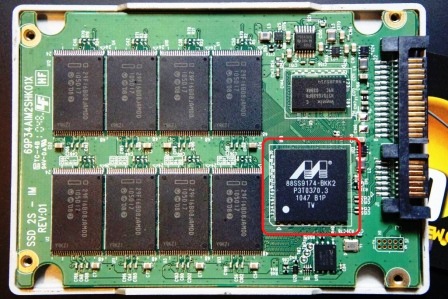Intel took the SSD realm by storm this week with the long awaited release of their first 510 series SATA 3 SSD.
Although consumers were anxious for the news, reviewers had to remain tight lipped having received their pre-release sample a day or so prior and being sworn to silence until Intels release date of 29 Feb 11.
.
We can say first hand that this was a very difficult task as Intel floored reviewers on their disassembly of the SSD itself. Situated front and center was a Marvell 9174 SATA 3 controller soldered to the SSD circuit board (PCB) rather than the Intel controller that everyone had expected.
Intel certainly treated this as the ‘Colonels Recipe’ and, outside of Intel, their wasn’t a person who had the information prior to opening the drive. In fact, Intel even waited until the very last minute to get samples to reviewers which was a bit uncharacteristic as we learned with our review of the Intel 310 mSATA SSD a few weeks prior.
INTRODUCTION
The Intel 510 SSD will be available to the consumer shortly after the release of this review. Its exterior packaging is typical of Intels attractive blue design and important information such as the specifications, 3 year warranty period as well as the term “Includes Desktop Installation Kit” were prominent on the exterior.
In examining the package contents, it was nice to see that Intel had considered the consumer outcry to make the transition to solid state drive as easy as possible. Once opened, one will find a desktop 3.5″ adapter bracket, DVD, as well as power and data cables for ease of installation in a standard desktop system. The DVD is an installation and Intel Tools CD which makes any installation a piece of cake.
DISK CHARACTERISTICS
The Intel 510 Series SSD is available in sizes of 120GB and 250 GB and pricing is already being seen at $314 and $614 respectively. The drive is a SATA 3 SSD with performance specifications of 500MB/s read and 315MB/s write for the 250GB version along with 450MB/s read and 210MB/s write for the 120GB version. There is also up to 20,000 IOPS (read) and 8000 IOPS (write) a t4k random write disk access. Its 3 year warranty is a pretty much standard lifespan for most drives and the consumer will most likely see their SSD last much longer than they could ever imagine.
An interesting thing to note about SSD ‘end life’ is that it is a refreshing change from the typical hard drive that crashes and takes all of your valuable data with it. SSD ‘end life’ simply means that it has reached its write total maximum and cannot be written to any further. The data retained on the SSD, however, is still readable and we don’t believe there is an expert yet who has tried to estimate the lifespan that the drive can be read from.
PG 1 – INTRODUCTION
PG2 – INTERIOR DESIGN AND BENCHMARK PROTOCOL
PG3 – INITIAL TESTING
PG4 – BENCHMARK TESTING
 The SSD Review The Worlds Dedicated SSD Education and Review Resource |
The SSD Review The Worlds Dedicated SSD Education and Review Resource | 

